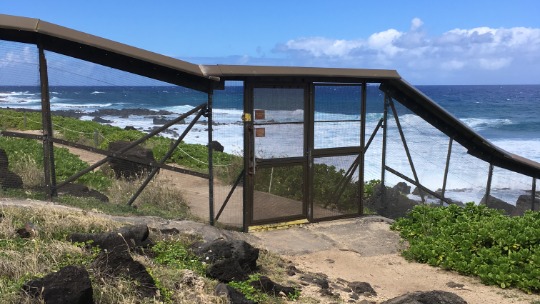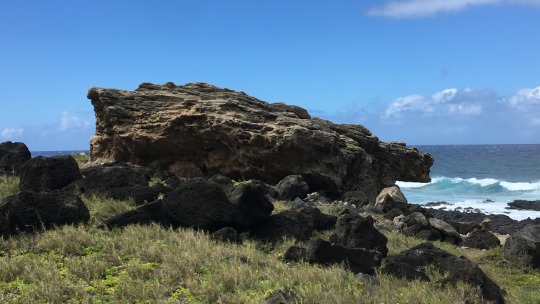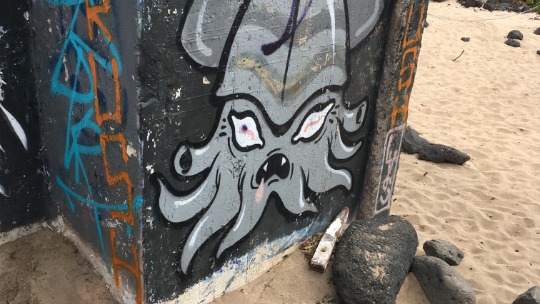Looking for a family friendly hike this summer? Put Kaena Point on your to-do list.
Located on Oahu’s westernmost tip, Kaena Point marks 40 years as a Natural Area Reserve. The 3.5-mile coastline is just one of 19 reserves on five islands that has special environmental protection under state law.
Forty years ago, plants and animals that were once abundant here almost disappeared due to erosion and damage from off-road vehicles and other human contact. But today, the area is flourishing with native plants, marine animals, and seabirds from throughout the Northwest Hawaiian Islands.
Naio and yellow ilima are some of the many native Hawaiian plants at Kaena Point.
Nature rebounds
In 2011, the state built a half-mile-long fence to keep out dogs, cats, rats, mongoose, and other animals that would prey on birds and their eggs. Since then, the bird population has taken flight. About 30,000 wedge-tail shearwaters, Laysan albatross, and other birds nest in the area. One of the highest number of birds' nests were recorded this year. The birds are in a roped-off areas that prevents people from walking near nesting grounds. Also thriving are newly planted akia, ilima, naupaka, and pohinahina.
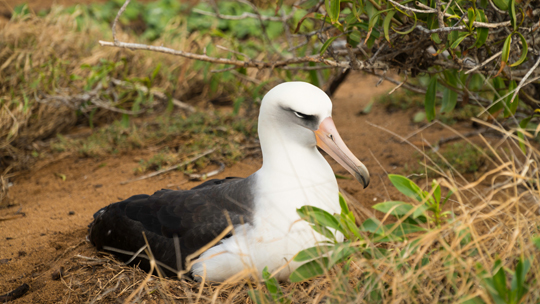
A nesting Laysan albatross at Kaena Point.
A gated fence allows visitors to enter but keeps out bird predators such as rats and mongoose.
Enjoy the wildlife
During whale season from December to April, look out into the ocean for humpbacks breaching in the distance. Walk down to the tide pools and you may see green sea turtles and monk seals sunning themselves on the sand. Remember to be respectful of the marine animals in their natural habitat. They’re protected by state law. Always keep your distance, especially if seals are tending to their pup. Seals can attack if they feel threatened.
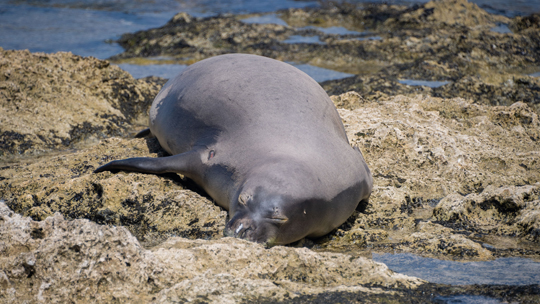
Hawaiian monk seals like to sun themselves at the tidepools.
Historical and cultural significance
Kaena means “the heat” in Hawaiian and is thought to be a brother or cousin of Pele, the fire goddess. The area is also referred to as “the end point,” not just because it’s Oahu’s westernmost point. A large rock called Leina a Kauhane (“leaping place of souls”) is believed to be where spirits come to rest and be reunited with their ancestors.
Leina a Kauhane ("leaping place of souls") is believed to be where spirits gather.
Up until the 1900s, Kaena Point was home to Hawaiian fishing and farming villages. In 1898, Oahu Railway and Land Company laid down a track around the point, connecting Oahu’s north and west sides to transport sugarcane. You can still see remnants of the tracks.
During World War I and II, Kaena Point became a strategic location for the military and Coast Guard to spot potential enemies. A Coast Guard watch tower built in 1920 remains near the coastline.
Remnant of a Coast Guard tower at Kaena Point.
Current and future protection
Kaena State Park is managed by the Department of Natural Land and Resources and encompasses 853 acres from Makua to Waialua. Each year, hundreds of thousands of residents and visitors hike to the point. Hawaii Congressman Ed Case is working on federal legislation to make Kaena Point a National Heritage Area. There are currently 55 nationwide. If passed, Kaena would be the first in Hawaii.
Eclectic wall art on a cement slab at Kaena Point reflects the area's marine life.
Hiking tips
There are two ways to get to Kaena Point. From the North Shore, drive to the end of Farrington Highway just past Dillingham Airfield. From the westside, drive to the end of the road at Yokohama Beach. Take a one-hour hike along the dry, rocky shoreline with spectacular ocean and mountain views.
Signs inform visitors about the importance of protecting Kaena Point's natural resources.
The trail is hot and dry with very little trees for shade. Remember to apply sunscreen, take water and snacks, and wear good hiking shoes. Dress comfortably and wear a hat, sunglasses, and long-sleeved shirt to protect you from the sun. In the summer, the sun sets directly off the point. If you stay to watch the sunset, bring a flashlight for your return walk.

A Laysan albatross soars above Kaena Point.
Resources
Learn more about Kaena Point and other Natural Area Reserves. Get information on how to protect Hawaii’s resources through volunteering and making a donation.
Hawaii Department of Land and Natural Resources
Pacific Rim Conservation
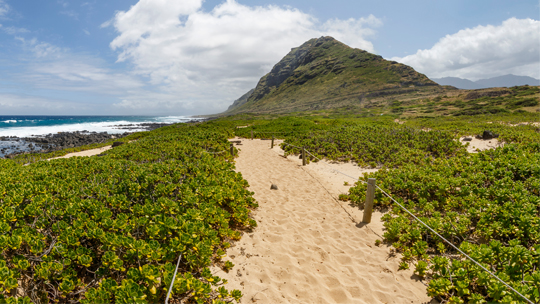
Stay on the hiking path to protect native plants and seabirds in roped-off areas.
Kaena Talk Story Series
Join the Department of Land and Natural Resources State Parks Division to learn about Kaena’s seabirds, turtles, Hawaiian monk seals, and other wildlife.
Where: Farm to Barn in Haleiwa
When: Every last Friday of the month, 6-7 p.m.
Free. No reservations needed.
Learn more.
Get involved
Check out the events calendar for opportunities to volunteer at Kaena and other state parks for State Park Volunteer Day.


